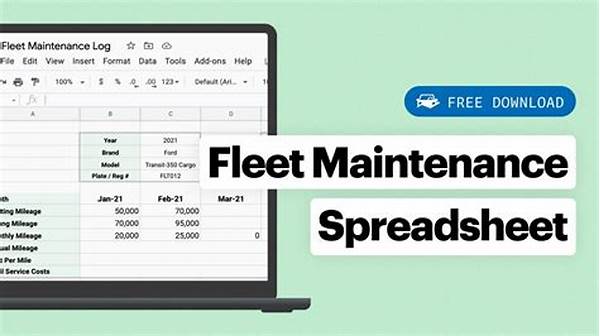
Fleet Vehicle Maintenance And Repair
The efficiency of your fleet vehicle operations hinges not only on the prowess of your drivers but significantly on the health of your vehicles. Investing in comprehensive fleet vehicle maintenance and repair is not just a routine task; it’s a strategic business move. Picture every vehicle in your fleet operating at peak performance, minimizing downtime, and maximizing productivity. Don’t let minor repairs snowball into costly overhauls; proactive maintenance can keep your operations smooth and your bottom line thriving. Are you ready to revolutionize your fleet’s performance and reduce costly disruptions? Let’s dive into the significant advantages fleet vehicle maintenance and repair can deliver.
The Importance of Regular Maintenance
Routine fleet vehicle maintenance and repair are indispensable in preserving the longevity and efficiency of your fleet. Regular inspections enable early detection of potential issues, preventing unexpected breakdowns that can disrupt your business operations. By scheduling consistent maintenance, you’re safeguarding your investment and ensuring your fleet is always ready to deliver outstanding service. A well-maintained fleet not only enhances reliability but also underscores your commitment to safety and dependability to your clients. Make the smart choice today, prioritizing fleet vehicle maintenance and repair to keep your vehicles — and business — running seamlessly.
Key Benefits of Maintenance Programs
1. Cost-Effectiveness: Investing in fleet vehicle maintenance and repair prevents expensive future repairs, saving money in the long term.
2. Enhanced Safety: Proper maintenance reduces the risk of accidents and increases safety for both drivers and cargo.
3. Improved Efficiency: Regular checks can improve fuel efficiency and overall vehicle performance, benefitting your business’s operational flow.
4. Prolonged Vehicle Life: Ensuring each vehicle is in optimal condition extends its lifespan, maximizing your investment.
5. Reputation Management: A well-maintained fleet projects professionalism and reliability, boosting your company’s reputation.
Why Prioritize Your Fleet’s Health
Your fleet represents a significant investment, and fleet vehicle maintenance and repair are crucial for protecting that investment. Delaying maintenance can lead to unexpected breakdowns, costly repairs, and even lost revenue. Regularly serviced vehicles reduce the risk of downtime, ensuring they remain on the road longer, contributing to consistent revenue streams. Furthermore, a well-maintained fleet underscores a company’s dedication to operational excellence and customer satisfaction. When you prioritize fleet maintenance, you’re not just maintaining vehicles; you’re enhancing your business’s credibility and reliability.
By implementing a robust fleet vehicle maintenance and repair strategy, you’re embarking on a path of sustainable business growth. It’s not mere upkeep; it’s a competitive edge that differentiates you in the marketplace. Your clients rely on punctuality and efficiency, and a reliable fleet ensures these expectations are consistently met. Don’t let vehicle issues hamper your company’s success — fortify your fleet with diligent maintenance and reap the benefits of a seamlessly running operation.
Building a Maintenance-Focused Operation
1. Strategic Planning: A proactive fleet vehicle maintenance and repair strategy ensures vehicles are in top condition, reducing unplanned downtime.
2. Technology Integration: Utilizing advanced technologies can streamline maintenance schedules and improve diagnostic capabilities.
3. Driver Training: Empower drivers with knowledge about vehicle care and early signs of potential issues.
4. Data Utilization: Leverage historical maintenance data to optimize schedules and detect patterns needing attention.
5. Vendor Collaboration: Partner with reputable repair shops to ensure quality work and genuine parts.
6. Policy Development: Develop company policies that emphasize the importance of regular maintenance and timely repairs.
7. Sustainability Goals: Incorporate eco-friendly practices in your maintenance routine, contributing to environmental conservation.
8. Efficient Communication: Establish clear lines of communication between drivers and maintenance teams for swift issue resolution.
9. Rewards Systems: Incentivize drivers for timely maintenance reporting to promote proactive vehicle care.
10. Periodic Reviews: Regularly evaluate the effectiveness of your maintenance strategy and refine based on performance data and feedback.
Implementing an Effective Maintenance Strategy
Creating an effective fleet vehicle maintenance and repair program is vital for any business relying on transportation. By focusing on systematic maintenance, your fleet operates at maximum efficiency, reducing the likelihood of breakdowns and unnecessary expenditure. Ensuring each team member understands the role of maintenance in operational success aligns the entire organization towards a common goal. Proactive maintenance protocols mean fewer surprises, delivering the dependability your clients expect. When your fleet is consistently well-maintained, you cultivate a culture of reliability and professionalism that sets your business apart from competitors.
Moreover, keeping vehicles road-ready means you can meet client demands without delay, cementing your reputation as a trustworthy and efficient service provider. The relationship between timely fleet vehicle maintenance and repair and customer satisfaction is undeniable. When customers know they can count on you for timely and efficient service, you foster long-term partnerships and enhance customer loyalty.
The Role of Maintenance in Fleet Management
Understanding the integral role of fleet vehicle maintenance and repair within your fleet management strategy can transform how you operate. It’s about more than just fixing what’s broken; it’s about anticipating needs and addressing them before they become problems. A robust maintenance schedule allows for seamless business operations and significant cost savings over time. Ensuring your vehicles are in peak condition is not just a logistical necessity; it’s a strategic advantage.
The ability to predict maintenance needs using data and insights means less operational downtime and more time meeting client needs. Technology in maintenance not only helps forecast and plan but also assures compliance with industry standards, safeguarding against potential legal issues. Investing in fleet vehicle maintenance and repair today means businesses can enjoy a smoother operational workflow, improved asset longevity, and higher customer satisfaction rates tomorrow.
By making fleet vehicle maintenance and repair a cornerstone of your fleet management strategy, you’re not merely preserving the vehicles themselves but fostering an environment of efficiency and reliability. This dedication to high standards sets the groundwork for a thriving business model, attuned to the needs of the modern consumer and positioned for long-term success.